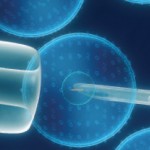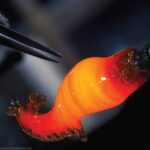How has this strategy worked? For patients living in rural communities, far from their prescribing physician or those who rely on an overburdened Veterans Administration for their care, this can be problematic.11 A recent study conducted by the U.S. Food and Drug Administration found that dispensed hydrocodone-combination product prescriptions decreased substantially after rescheduling, with 26.3 million fewer hydrocodone-combination product prescriptions and 1.1 billion fewer hydrocodone-combination product tablets dispensed in 2015.12 That’s about four fewer pills for every woman, man and child in America. Interestingly, the data also demonstrated that physicians did not game the system by substituting non-hydrocodone-combination product opioid analgesics. Although this law can be an inconvenience for patients and rheumatology practices, the stark numbers speak for themselves.
When Science Gets Ugly
In a unanimous U.S. Supreme Court verdict written by Justice Clarence Thomas in 2013, human genes may not be patented, but technologies that modify genes can.13 Perhaps no greater biosciences patent war has ever been waged than the one currently underway, pitting two research behemoths, the University of California (UC) at Berkeley and the Broad Institute in Cambridge, Mass., surrounding the ownership of CRISPR-Cas9 technology. Determining the inventor could have multi-billion dollar implications for the biotech companies that have already been spun off by these two institutions. There will definitely be winners and losers (see “Gene Manipulation Has Potential to Alter Genomes, Impact Society,” The Rheumatologist, January 2016).
With less than 5% of the world’s population, the U.S consumes nearly 80% of the global supply of opioids. The No. 1 most prescribed drug for several years running is hydrocodone—not statins, not beta-blockers or diuretics.
The CRISPR-Cas9 editing technology was publicly described in the journal, Science, in 2012 by Jennifer Doudna, a biologist at UC Berkeley, and the French microbiologist Emmanuelle Charpentier. But Feng Zhang, a scientist at the Broad Institute, was first to win a patent on the technique after submitting lab notebooks he says prove he invented it first.14 The system uses a cutting protein, Cas9, attached to a short RNA molecule that guides it to precise locations in a genome. Already, scientists have used it to disable HIV, cure muscular dystrophy in mice and make wheat that is resistant to crop diseases.
Under current rules, known as first to file, patent rights go to whoever submits a patent application first. That would mean an easy victory for Doudna and Charpentier, because their earliest application is dated May 2012, seven months before Zhang’s. But because of the dates of the discoveries, the case is being carried out under older, first to invent, rules, in which the winner is whoever is able to show by any means that they were first to make an invention work or simply conceive of it.


